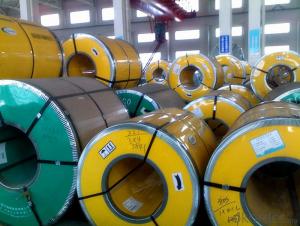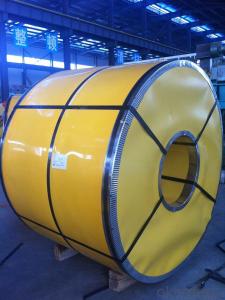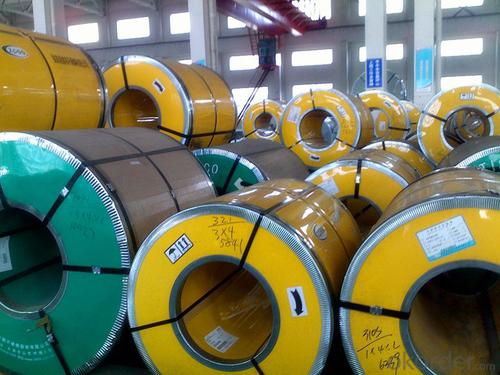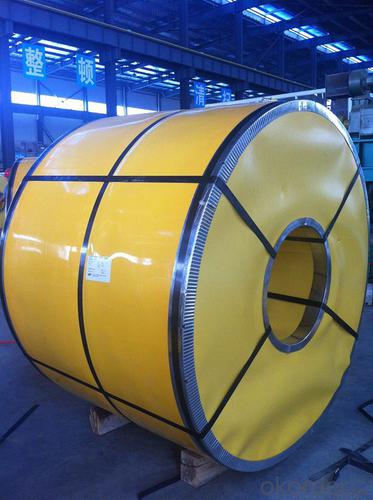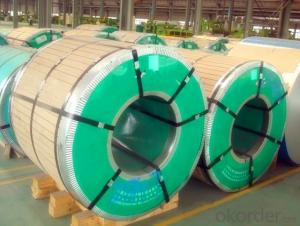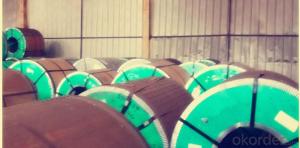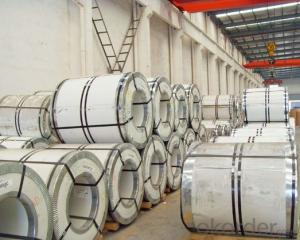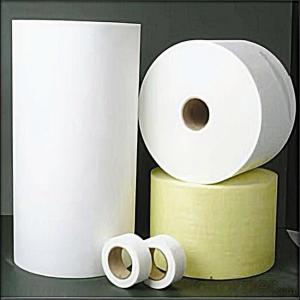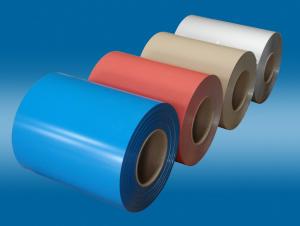Spring Steel Strips - Stainless Steel Coil/Strip 304 Cold Rolled 2B Finish
- Loading Port:
- Ningbo
- Payment Terms:
- TT OR LC
- Min Order Qty:
- 100 m.t.
- Supply Capability:
- 20000 m.t./month
OKorder Service Pledge
OKorder Financial Service
You Might Also Like
Cold Rolled Stainless Steel Coil 304 Grade Narrow/Wide 2B/BA Finish
Packaging Detail: standard export packing or as customer's requirements
Delivery Detail: 7-15 days after the order
Standard: | AISI,ASTM,BS,DIN,GB,JIS | Grade: | 304 | Thickness: | 0.3-3.0mm |
Place of Origin: | China Mainland | Brand Name: | CNBM | Model Number: | 304 |
Type: | Steel Coil | Technique: | Cold Rolled | Surface Treatment: | 2B, BA |
Application: | Medical instruments, building, chemical food industry agriculture | Width: | 500-2000mm | Length: | Coil |
finish: | 2B, BA | item: | 304 cold rolled stainless steel coil | density: | 7.93 |
- Q:How are stainless steel strips different from galvanized steel strips?
- Stainless steel strips differ from galvanized steel strips primarily in terms of their composition and the way they are protected against corrosion. Stainless steel strips are made from an alloy of iron and chromium, which provides excellent resistance to rust and corrosion without the need for additional coatings. On the other hand, galvanized steel strips are made from regular steel that is coated with a layer of zinc to protect it from rust and corrosion. This zinc coating acts as a sacrificial layer, meaning it corrodes first before the steel underneath, providing a certain level of protection. However, stainless steel strips generally offer superior corrosion resistance and are more suitable for applications where long-term durability and resistance to harsh environments are required.
- Q:Can stainless steel strips be used in agricultural applications?
- Yes, stainless steel strips can be used in agricultural applications. Stainless steel is highly resistant to corrosion, making it suitable for use in various agricultural environments. It can be used for constructing and reinforcing agricultural equipment, such as machinery parts, fencing, and irrigation systems. Stainless steel strips also offer durability, strength, and ease of maintenance, making them a practical choice for agricultural applications.
- Q:Can stainless steel strips be used in architectural staircase systems?
- Yes, stainless steel strips can be used in architectural staircase systems. Stainless steel is a popular material choice for stairs due to its durability, corrosion resistance, and aesthetic appeal. Stainless steel strips can be utilized in various ways within the staircase system, such as for treads, risers, handrails, balusters, or decorative elements. The strips can be custom fabricated to meet specific design requirements, allowing for flexibility and creativity in staircase design. Additionally, stainless steel strips can be finished in different ways, such as brushed or polished, to achieve the desired look and feel of the staircase.
- Q:Are stainless steel strips resistant to hydrogen sulfide corrosion?
- Generally, stainless steel strips are resistant to hydrogen sulfide corrosion. They possess excellent corrosion resistance properties, especially against the corrosive effects of hydrogen sulfide gas. The presence of chromium in stainless steel creates a protective oxide layer on the surface, which acts as a barrier against corrosion. Moreover, stainless steel grades containing higher amounts of molybdenum, such as 316 and 904L, exhibit even greater resistance to hydrogen sulfide corrosion. However, it is important to acknowledge that the corrosion resistance of stainless steel strips can vary depending on the specific grade and environmental conditions. Therefore, seeking advice from a materials engineer or corrosion specialist is recommended to determine the most suitable stainless steel grade for a specific application involving exposure to hydrogen sulfide.
- Q:Can stainless steel strips be used in the oil refining industry?
- Yes, stainless steel strips can be used in the oil refining industry. Stainless steel is highly resistant to corrosion, making it an ideal material for handling and storing various chemicals and substances used in the oil refining process. Additionally, stainless steel has excellent temperature resistance, which is important in an industry where high temperatures are often encountered. Stainless steel strips are commonly used in equipment such as heat exchangers, distillation columns, and storage tanks, where they provide strength, durability, and resistance to corrosion. Overall, stainless steel strips are a reliable and cost-effective choice for the oil refining industry.
- Q:What are the different types of surface coatings for stainless steel strips?
- Stainless steel strips come with a variety of surface coatings, each offering unique characteristics and advantages. Here are some commonly used types: 1. Passivation: To improve stainless steel's corrosion resistance and appearance, an acidic solution is used to eliminate contaminants and promote the formation of a passive oxide layer. 2. Electroplating: Through an electrochemical process, a layer of metal is deposited onto the stainless steel surface. This coating can provide decorative finishes like gold or chrome plating and enhance corrosion resistance. 3. Powder coating: A dry powder is applied to the stainless steel surface and then heated to create a protective coating. This coating comes in various colors and finishes, offering exceptional durability, resistance to corrosion, chemicals, and UV rays. 4. PVD coating: In a vacuum chamber, a thin film of metal is vaporized and deposited onto the stainless steel surface. This coating offers excellent adhesion, hardness, wear resistance, and can provide both decorative and functional finishes. 5. Paint coating: Stainless steel strips can be coated with paint to create a protective barrier against corrosion and environmental factors. These coatings come in different colors and can be customized for specific properties such as high heat resistance or resistance to chemicals. 6. Ceramic coating: Applied to stainless steel strips, ceramic coatings provide a hard, durable, and heat-resistant surface. They offer excellent abrasion resistance and can give a smooth and glossy finish. When selecting a surface coating for stainless steel strips, it is crucial to consider their specific requirements and applications. Factors like corrosion resistance, appearance, durability, and functionality should be taken into account to ensure the desired performance and longevity of the coated stainless steel strips.
- Q:What are the different types of surface textures for stainless steel strips?
- There are several different types of surface textures available for stainless steel strips, each offering unique characteristics and aesthetic appeal. Some common types of surface textures for stainless steel strips include: 1. No.1 Finish: This is the most basic and commonly used stainless steel surface texture, characterized by a dull, rough, and non-reflective appearance. It is produced by hot rolling the stainless steel strip and is typically used for industrial applications where appearance is not a priority. 2. No.2B Finish: This surface texture is also achieved through hot rolling, followed by a cold rolling process and annealing. It exhibits a smooth, reflective appearance with a slightly duller finish compared to No.1. No.2B finish is widely used in various applications, including kitchen appliances, architectural components, and decorative uses. 3. No.4 Finish: Also known as satin or brushed finish, this texture is achieved by mechanically polishing the stainless steel strip using abrasive materials. It results in a consistent, smooth, and linear appearance with a low reflectivity. No.4 finish is commonly used for decorative purposes in the architectural and interior design industries. 4. BA (Bright Annealed) Finish: This surface texture is obtained by subjecting the stainless steel strip to a bright annealing process, which helps improve its corrosion resistance and give a highly reflective, mirror-like finish. The BA finish is often used in applications where a high level of reflectivity and aesthetics are desired, such as automotive trim, decorative items, and appliances. 5. No.8/Mirror Finish: This is the highest quality and most reflective surface texture available for stainless steel strips. It is achieved through a multi-step process of grinding, polishing, and buffing the strip, resulting in a flawless, mirror-like appearance. The No.8 finish is commonly used in high-end architectural projects, luxury goods, and decorative applications. These are just a few examples of the various surface textures available for stainless steel strips. The choice of texture depends on the specific requirements of the application, including aesthetics, functionality, and durability.
- Q:What are the benefits of using stainless steel strips?
- There are several benefits of using stainless steel strips. Firstly, stainless steel is highly resistant to corrosion, making it ideal for use in various environments, including outdoor and marine applications. Secondly, stainless steel strips offer excellent strength and durability, ensuring long-term performance and reliability. Additionally, stainless steel is easy to clean and maintain, making it a hygienic choice for industries such as food processing and healthcare. Lastly, stainless steel strips have an attractive appearance, making them suitable for decorative purposes as well.
- Q:Can stainless steel strips be used in the medical implants?
- Yes, stainless steel strips can be used in medical implants. Stainless steel is a durable and corrosion-resistant material, making it suitable for use in medical devices and implants. It is commonly used in orthopedic implants such as bone plates, screws, and wires, as well as in cardiovascular stents and dental implants. Stainless steel offers excellent biocompatibility, meaning it is compatible with the human body and does not cause adverse reactions or toxicity. Additionally, stainless steel can be easily sterilized, which is crucial for medical implants to prevent infections. Overall, stainless steel strips are a reliable and commonly used material in the production of medical implants.
- Q:What are the different types of stainless steel strip alloys?
- Some of the different types of stainless steel strip alloys include austenitic stainless steel, ferritic stainless steel, martensitic stainless steel, and duplex stainless steel.
1. Manufacturer Overview |
|
|---|---|
| Location | |
| Year Established | |
| Annual Output Value | |
| Main Markets | |
| Company Certifications | |
2. Manufacturer Certificates |
|
|---|---|
| a) Certification Name | |
| Range | |
| Reference | |
| Validity Period | |
3. Manufacturer Capability |
|
|---|---|
| a)Trade Capacity | |
| Nearest Port | |
| Export Percentage | |
| No.of Employees in Trade Department | |
| Language Spoken: | |
| b)Factory Information | |
| Factory Size: | |
| No. of Production Lines | |
| Contract Manufacturing | |
| Product Price Range | |
Send your message to us
Spring Steel Strips - Stainless Steel Coil/Strip 304 Cold Rolled 2B Finish
- Loading Port:
- Ningbo
- Payment Terms:
- TT OR LC
- Min Order Qty:
- 100 m.t.
- Supply Capability:
- 20000 m.t./month
OKorder Service Pledge
OKorder Financial Service
Similar products
New products
Hot products
Hot Searches
Related keywords
